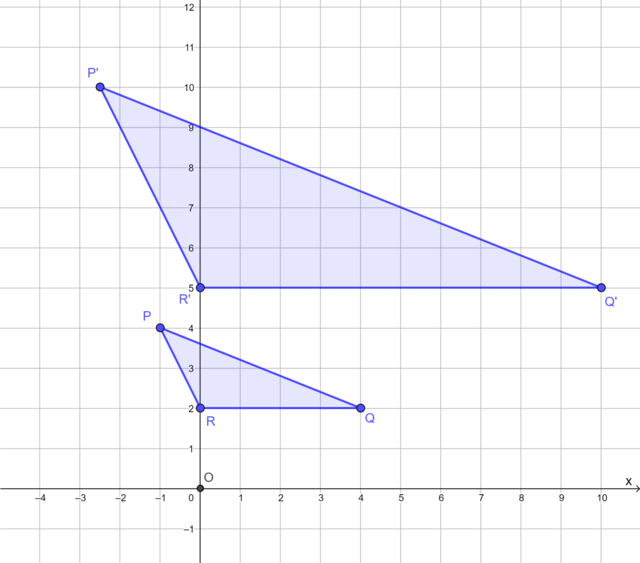
The diagram shows \(\triangle PQR\) and its image \(\triangle P'Q'R'\) under an enlargement transformation with the origin as the centre of enlargement.
|
Previous
Rotation transformations
|
Next
Chapter summary
|
We can use transformations to change the size of a shape. To make a shape bigger, we use an enlargement transformation. This is sometimes referred to as stretching or expanding a shape. To make a shape smaller, we use a reduction transformation, also referred to as shrinking a shape.
The diagram shows rectangle \(ABCD\) and its image \(A'B'C'D'\) under an enlargement transformation with the origin as the centre of enlargement.
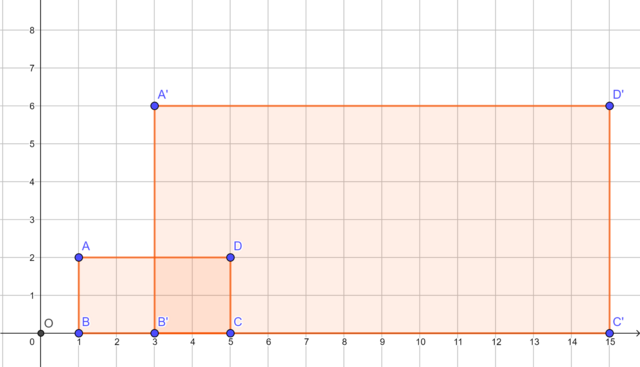
Compare the sides of rectangle \(ABCD\) and the corresponding sides of its image \(A'B'C'D'\):
Compare the vertices of rectangle \(ABCD\) and the corresponding vertices of its image \(A'B'C'D'\).
The diagram shows \(\triangle PQR\) and its image \(\triangle P'Q'R'\) under a reduction transformation with the origin as the centre of reduction.
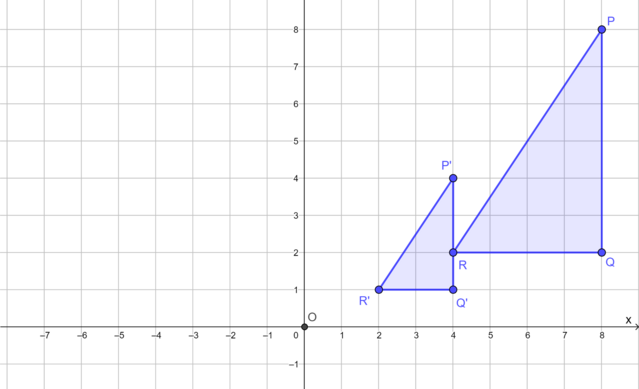
Compare the sides of \(\triangle PQR\) and the corresponding sides of its image \(\triangle P'Q'R'\):
Compare the vertices of \(\triangle PQR\) and the corresponding vertices of its image \(\triangle P'Q'R'\).
We have discovered the following properties of enlargement and reduction transformations:
Determine the scale factor for the enlargement transformation with the origin as the centre of enlargement.
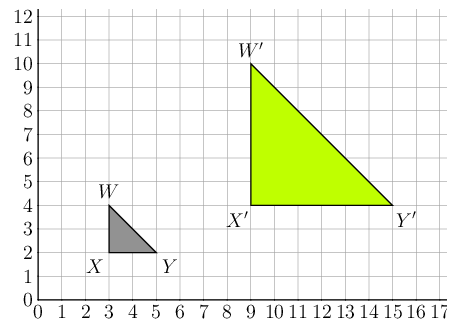
The diagram shows \(\triangle WXY\) and \(\triangle W'X'Y'\). We can draw dotted lines between the corresponding vertices to help us compare the corresponding sides.
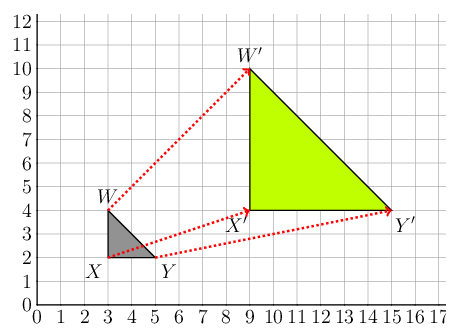
We can compare any pair of corresponding sides, so we choose sides for which we can easily find the lengths. \(XY\) and \(X'Y'\) are horizontal lengths and we can find the lengths by subtracting the values of the corresponding \(x\)-coordinates.
\[ \begin{align*} \frac{X'Y'}{XY} &= \frac{15 - 9}{5 - 3} \\ &= \frac{6}{2} \\ &= 3 \end{align*} \]We can calculate the lengths of the vertical sides \(XW\) and \(X'W'\) by subtracting the values of the corresponding \(y\)-coordinates.
\[ \frac{W'X'}{WX} = \frac{10 - 4}{4 - 2} = \frac{6}{2} = 3 \]We can find the length of \(WY\) and \(W'Y'\) using the Theorem of Pythagoras:
\[ \begin{align*} WY^2 &= WX^2 + XY^2 \\ &= (2)^2 + (2)^2 \\ &= 4 + 4 \\ &= 8 \\ WY &= \sqrt{8} \\ &= 2\sqrt{2} \end{align*} \] \[ \begin{align*} W'Y'^2 &= W'X'^2 + X'Y'^2 \\ &= (6)^2 + (6)^2 \\ &= 36 + 36 \\ &= 72 \\ W'Y' &= \sqrt{72} \\ &= 6\sqrt{2} \end{align*} \]So, \[\dfrac{W'Y'}{WY} = \dfrac{6\sqrt{2}}{2\sqrt{2}} = 3\]
Notice that the lengths of all three sides have been increased in the same proportion.
The scale factor for this enlargement transformation is 3.
For each diagram, describe the enlargement or reduction transformation. Remember to state the centre of enlargement or reduction in each case.

The diagram shows \(\triangle PQR\) and its image \(\triangle P'Q'R'\) under an enlargement transformation with the origin as the centre of enlargement.

The diagram shows square \(BCDE\) and its image \(B'C'D'E'\) under a reduction transformation with the origin as the centre of reduction.
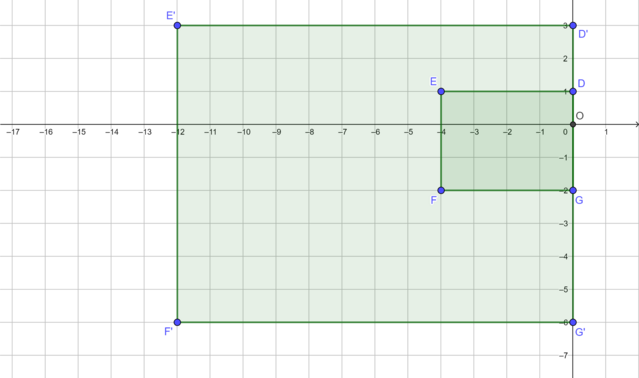
The diagram shows rectangle \(DEFG\) and its image \(D'E'F'G'\) under an enlargement transformation with the origin as the centre of enlargement.
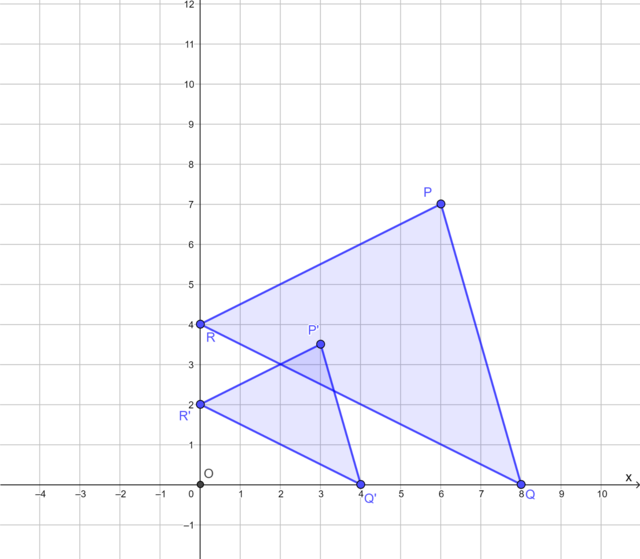
The diagram shows \(\triangle PQR\) and its image \(\triangle P'Q'R'\) under a reduction transformation with the origin as the centre of reduction.
The diagram shows square \(QTSR\) and its image \(Q'T'S'R'\) under a reduction transformation with the origin as the centre of reduction. Find the scale factor.
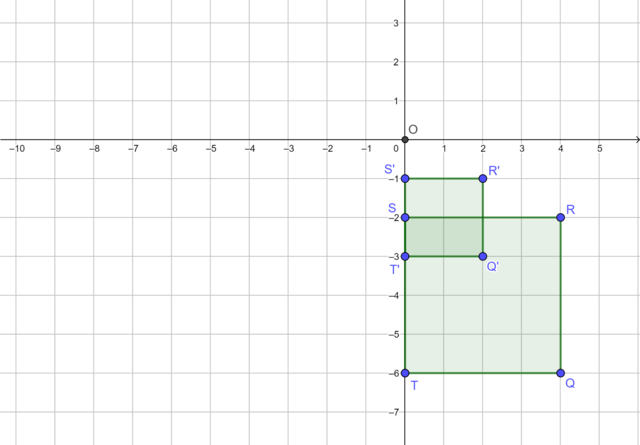
Scale factor = \(\frac{1}{2}\)
The diagram shows \(\triangle ABC\) and its image \(\triangle A'B'C'\) under an enlargement transformation with the origin as the centre of enlargement. Determine the scale factor.
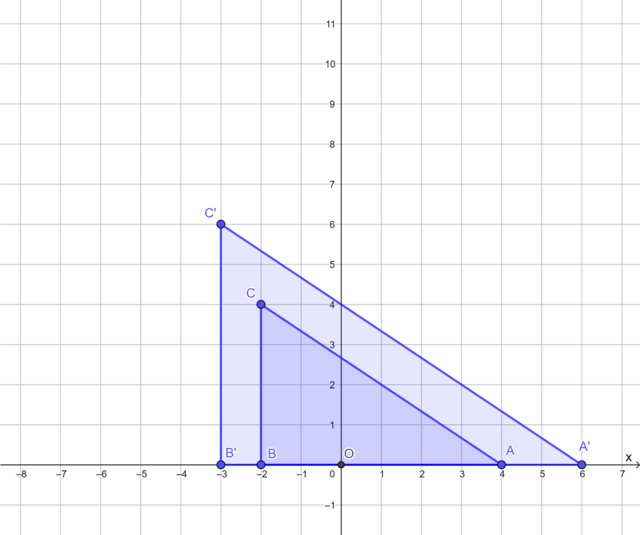
Scale factor = \(\frac{3}{2}\)
The diagram shows rectangle \(MNPQ\) and its image \(M'N'P'Q'\) under an enlargement transformation with the origin as the centre of enlargement. Find the scale factor.
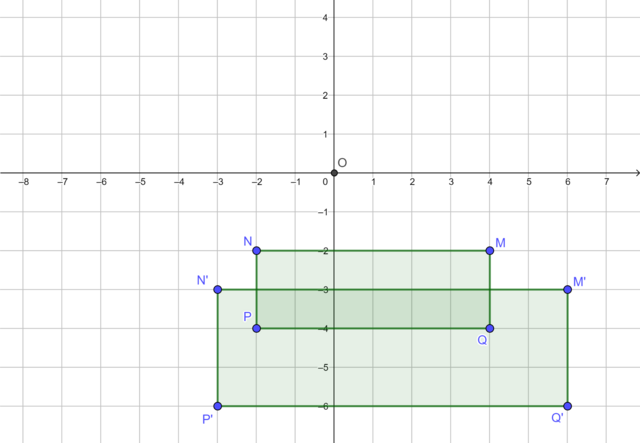
Scale factor = \(\frac{3}{2}\)
The diagram shows square \(WXYZ\) and its image \(W'X'Y'Z'\) under an enlargement transformation with the origin as the centre of enlargement. Find the scale factor.
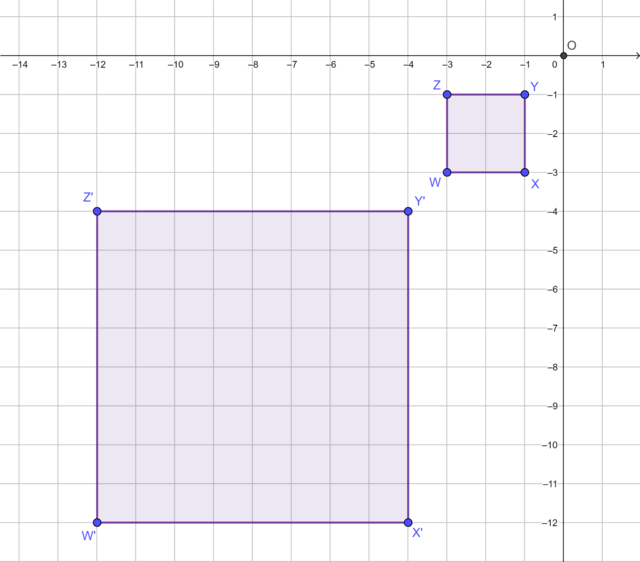
Scale factor = 4
|
Previous
Rotation transformations
|
Table of Contents |
Next
Chapter summary
|